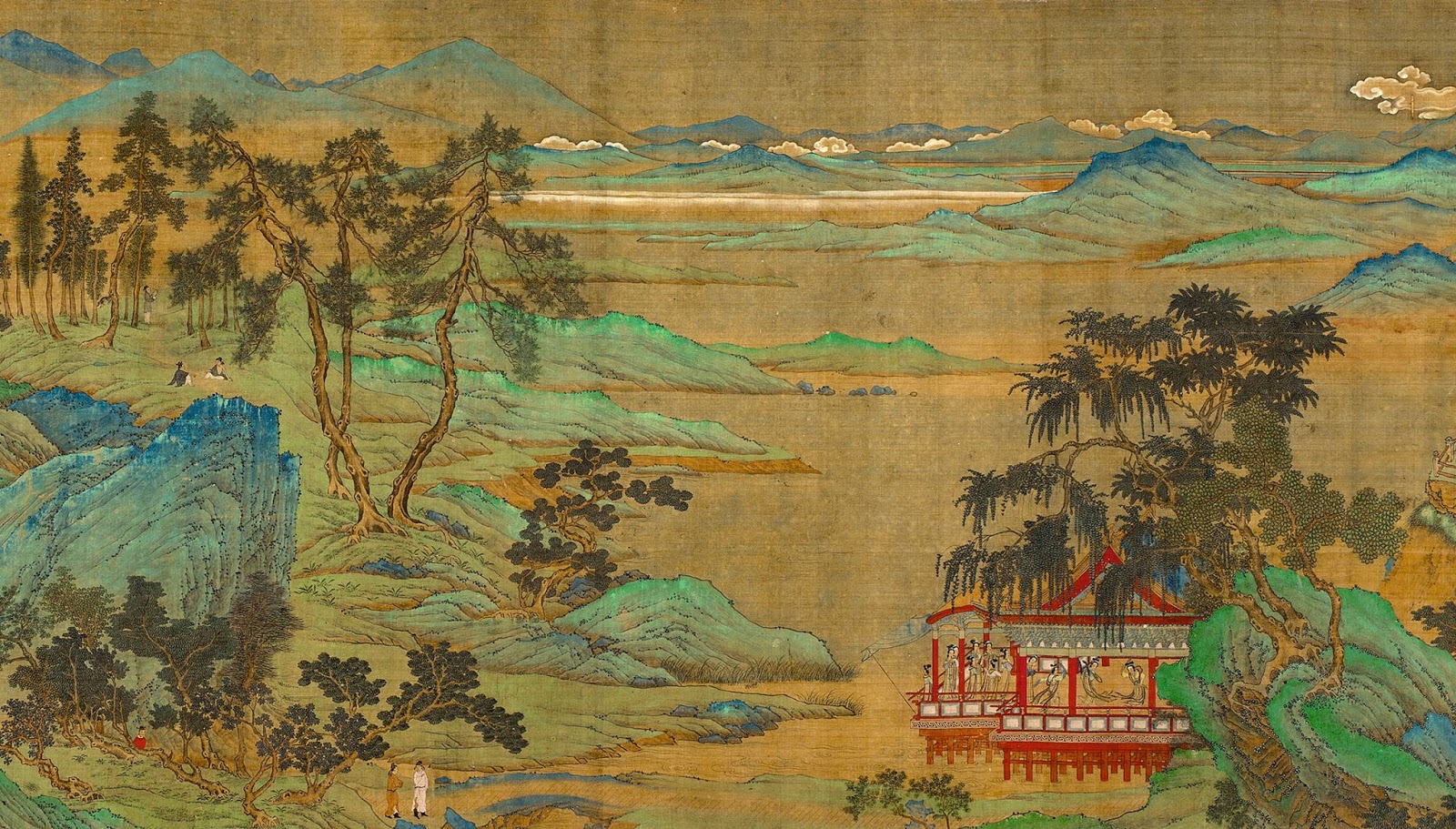 |
| Qiu Ying, The Jiucheng Palace (small detail), about 1525–33. Osaka City Museum of Fine Arts, (c) Osaka City Museum of Fine Arts |
The joke about Corot is that he did 2000 paintings, of which 5000 are in America. Meet Qiu Ying (about 1494–about 1552), the most forged artist in Chinese history. There are estimated to be hundreds or thousands of copies and forgeries for every authentic Qiu Ying painting.
Qiu has landed at LACMA with a big, scholarly, and surprisingly accessible show, "Where the Truth Lies: The Art of Qiu Ying." It's unique among American exhibitions of Chinese painting, starting with the playful title. It's no less notable for being organized by a museum that doesn't own a single work by the artist.
The show has been a career-long project for LACMA curator Stephen Little. In 1979 Little, then at San Francisco's Asian Art Museum, recommended the acquisition of an album of Qiu Ying fan paintings and resolved to do a show on the artist, someday. Qiu is a paradox on many levels. He was famous—one of the "four masters of the Wu School"—but also obscure. Almost nothing is known of his life, not even his birth and death years. The gaps in his résumé, plus a few slighting references, have led to the belief that he was of humble background and uneducated (an illiterate literati?). The LACMA show demonstrates Qiu's command of language in a tactful letter asking for rheumatism medicine. Inscriptions on Qiu's paintings by artists such as Wen Zhengming testify to his esteem.
 |
| Qiu Ying, Crab Apple and Mountain Birds, about 1534–42. Shanghai Museum |
"Where the Truth Lies" deduces a chronology for Qiu's work, drawing on such clues as inscriptions (of admirers who death dates are known) and even cracks in the artist's deteriorating seals. This suggests that Qiu was a child prodigy who continued to refine his style throughout his career. Like most great Chinese painters, Qiu copied the Old Masters and was expert in a flurry of historical styles. He made the archaic blue and green technique his own, using semi-precious azurite and malachite as pigments. The blue-green landscapes, accented with touches of red (Corot's signature gimmick) make his art appealing even to Westerners with little exposure to traditional Chinese painting. But Qiu was equally adept in pale literati washes and ink monochromes.
Even in his lifetime, copies and forgeries extended Qiu's reputation. His daughter (Qiu Zhu) and a possible son-in-law (You Qiu) were artists in their own rights and meticulous copyists of Qiu's work. The copies and outright forgeries continue to the present day, as do creative reinventions.
 |
| Qiu Ying, The Emperor Guangwu Fording a River, about 1534–42. National Gallery of Canada, Ottawa |
|



Comments
The Zumthor building... I try to hold back my uninformed reservations, but the downsized square footage is upsetting. But giving back land to the tar pits? That's noble. We should have never build art museums on that land. Those awful LACMA buildings had to go, they were not made for art. It's so easy to see this when you take a trip to the Getty and see how good LACMA's masterpieces look in a better space. I bet modern art will look nothing like it did before when it's hung in BCAM. Perhaps less square footage, more efficient use of square footage, yields more access to art. The idea that Zumthor did not speak to curators is also troubling. But the design is so similar the Koolhaas design for LACMA!!! One big building with no clear separation between arts, allowing for cross narratives among different curatorial areas and placing all arts from all cultures on equal footing. That is a worthy goal and unique. A critique of square footage will never cease until we stop making art or collecting art, something nobody in their right mind would ever desire. LACMA isn't the only offender or the worse offender in this respect; not having enough space to show the art it owns. Bigger isn't necessarily better. A better home, even if not larger, is nothing to rage about, especially when so much else has improved.
https://lareviewofbooks.org/article/lacma-part-going-rogue
> Rushing into demolition before having
> money in the bank is a sleazy, transparently
> manipulative maneuver meant to put LACMA
> and the county over a barrel. The director
> is deliberately leveraging his out-of-control
> project into a must-build emergency by creating
> an empty lot, with the collections held hostage
> in storage and no satellites in sight.
> LACMA is set to go rogue. This is a betrayal
> of the public trust.